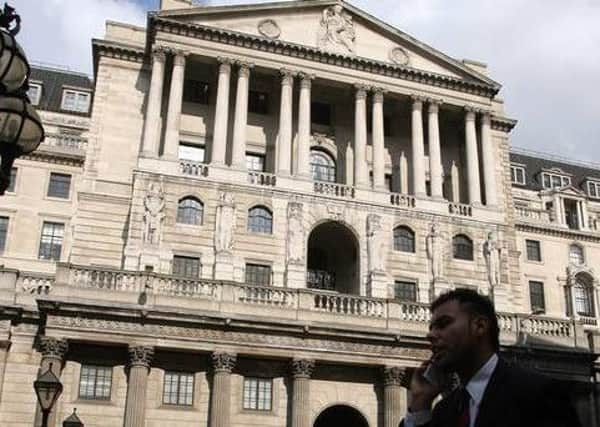Bank of England holds interest rates at 0.75%, but warns of '˜either direction' response to Brexit


Members of the Bank’s nine-strong Monetary Policy Committee (MPC) voted unanimously to keep rates on hold after August’s quarter-point hike and as it remains in wait-and-see mode amid Brexit uncertainty.
In its quarterly inflation report published alongside the rates decision, the Bank sketched out how it could respond to various Brexit scenarios, signalling that it could even be forced to raise rates should a disorderly exit send the pound tumbling.
Advertisement
Hide AdAdvertisement
Hide Ad“The monetary policy response to Brexit, whatever form it takes, will not be automatic and could be in either direction,” warned the Bank.
Its report revealed the toll Brexit is taking on the country, with business investment now predicted to have screeched to a complete halt overall this year as uncertainty wreaks havoc on company spending decisions.
Consumer spending has been helping prop up the economy, with a summer heatwave shopping spree set to see growth accelerate to 0.6% in the third quarter, up from 0.4% in the previous three months, according to the Bank.
But this is likely to have been only a temporary boost, and the Bank expects growth to pare back to 0.3% in the fourth quarter before steadying at 0.4% thereafter.
This saw the Bank trim its forecast for growth overall in 2018, to 1.3% from 1.4% predicted in August, while it also nudged its 2019 outlook down to 1.7% from 1.8%.
Its forecasts are based on a “smooth” exit from the EU, with financial markets pencilling in around one rate rise a year for the next three years.
However, the Bank admits the economic outlook will “depend significantly on the nature of EU withdrawal”.
It offered a glimmer of hope for worried businesses, as it said policymakers saw greater clarity on Brexit emerging “in the relatively near term”.
Advertisement
Hide AdAdvertisement
Hide AdThe report comes as Brexit Secretary Dominic Raab has been playing down suggestions that a tentative date of November 21 has been set for a Brexit deal to be agreed.
Reports on Thursday also suggest that Prime Minister Theresa May has made significant in-roads into securing an agreement for financial services firms to operate across the EU after March 29.
Governor Mark Carney has previously told MPs on the Treasury Select Committee that rates could go up or down in the event of a cliff-edge Brexit.
The Bank’s latest report highlights the balancing act policymakers would face, as it seeks to support growth while preventing runaway inflation should the pound crash.
While it would normally raise rates to rein in surging inflation, the Bank can look through this on a temporary basis to bolster growth, as it did in the aftermath of the 2016 EU referendum.
It could take this approach again if needed, in “exceptional circumstances”, the Bank said.
In a stark warning, its report cautioned the supply side of the economy could be hit hard in a no-deal scenario.
It warned: “A disorderly withdrawal could result in delays at borders, disruptions to supply chains and more rapid and costly shifts in patterns of production, severely impacting the productive capacity of UK businesses.”
Advertisement
Hide AdAdvertisement
Hide AdFirms across all sectors of the economy have been preparing contingency plans for a Brexit, with a number reportedly planning to stockpile in case of disruption at borders.
The Bank said “only a few” of those firms had actually started to put contingency plans into action due to costs of back-up measures.
